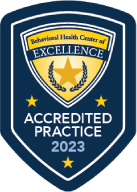Many parents ask us this great question!
Applied behavior analysis, known best as ABA, is a scientific approach to understanding behavior. Behavior is simply the skills and actions we use to communicate and to get our needs/wants met!
ABA focuses on decreasing socially significant problem behaviors, like aggression, while also teaching socially appropriate behaviors such as:
- Communication
- Social skills
- Academics
- Daily living skills
- Practical skills that improve overall quality of life
Here at Joybridge Kids, teaching ABA concepts to our families is an essential part of our parent training program. Understanding the function, or the reasoning of why a child engages in certain behaviors is a critical step to helping children significantly change a particular behavior.
This is one of the first ABA concepts that we introduce in our parent training program!
In the field of ABA, we focus on four basic “functions” of a behavior. The four “functions,” or the reasons a behavior may occur, are:
- Escape – Trying to avoid or get away from an unpreferred activity/situation or a person, such as brushing teeth or completing a chore.
- Access – Trying to gain access to something preferred, such as a favorite toy or activity.
- Automatic – Engaging in a behavior that feels good to them, such as jumping or rocking back and forth.
- Attention – Trying to gain the attention of another person.
By understanding the function behind your child’s behavior, you and your family can respond in a specific way that will assist in changing your child’s behavior. After identifying the function(s) of a problem behavior, we can then teach children how to express their wants/needs in a more effective and socially acceptable manner!
For example, if a child routinely screams while you’re attending to a sibling, we can identify the function of the behavior through observations of the environment, including antecedents (what occurs immediately prior to screaming) and consequences (what occurs immediately after the behavior).
Analyzing the pattern of behavior, we can identify the function of the screaming behavior, such as accessing attention, and then teach the child how to appropriately request attention in that context! This could include teaching the child to say “Daddy, I need you,” tapping their parent’s shoulder, etc. We work with you and your child to identify the communication method that will work best for the whole family unit!
Through parent training, your BCBA can help you identify the function of a behavior, and discuss simple strategies, known as preventative or antecedent-based strategies, of what to do in order to prevent the problem behavior from occurring. We will also work with you to develop a plan of consequence strategies, which outlines how to consistently respond to the problem behavior when it occurs- which will decrease the likelihood of them occurring over time!
When the problem behavior no longer meets the function (i.e. attention), and the new communicative behavior does (i.e. asking for help), you will see the appropriate attention-seeking behavior occur in place of the inappropriate attention-seeking behavior! Effective and meaningful behavior change!
We will dive deeper into the four functions of behavior in coming posts! We will provide various scenarios and ideas on how to handle specific behaviors to help parents better understand why the behavior is occurring and what to teach their child to do instead!
By: Nick Sobieralski, BCBA, LBA
Contact JoyBridge Kids
To contact a member of our team, please give us a call at 615-560-6622 or complete our online contact form.


